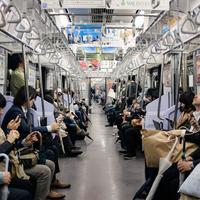日本と中国の昔からの衣装を着てファッションショー
にっぽん と ちゅうごく の むかし から の いしょう を きて ファッションショー
fashion show featuring traditional costumes from Japan and China
Fashion show with traditional Japanese and Chinese costumes
日本 と 中国 の 昔 から の 衣装 を 着て ファッションショー
にっぽん||ちゅうごく||むかし|||いしょう||きて|
||China|||||Kostüme|||
Japan||China||old|||clothing||wearing|fashion show
Wearing traditional Japanese and Chinese costumes fashion show
Modeshow som bär traditionella dräkter från Japan och Kina
日本 と 中国 の 昔 から の 衣装 を 紹介 する ファッションショー が 東京 で あり ました 。
にっぽん||ちゅうごく||むかし|||いしょう||しょうかい||||とうきょう|||
|||||||||||||Tokio|||
||China||past|||clothing||introduction||||Tokyo|||
Tokyo was a fashion show introducing traditional Japanese and Chinese costumes.
日本 と 中国 から 全部 で 200 人 ぐらい が モデル に なり ました 。
にっぽん||ちゅうごく||ぜんぶ||じん|||もでる|||
||China|from|all|||about||model|||became
About 200 people in total from Japan and China became models.
Około 200 osób z Japonii i Chin stało się modelami.
日本 から は 、 子ども が 元気に 大きく なる ように 祈る 「 七五三 」 や 、 結婚 式 の とき に 着る 着物 を 紹介 し ました 。
にっぽん|||こども||げんきに|おおきく|||いのる|しちごさん||けっこん|しき||||きる|きもの||しょうかい||
|from||child||healthily|big|to become||to pray|Shichi-go-san||marriage|||time||wear|kimono||introduction||
From Japan, we introduced “Shichigosan,” which prays for children to grow up cheerfully, and kimonos that they wear during wedding ceremonies.
Z Japonii wprowadziliśmy „Shichigosan”, który modli się, aby dzieci dobrze się rozwijały, a kimona noszą podczas ceremonii ślubnych.
Från Japan introducerade vi "Shichigosan", en bön för barn att växa upp och kimonos bärs vid bröllopsceremonin.
はかま を はいた 男の子 や 、 きれいな 振り袖 を 着た 女性 が 出て き ました 。
|||おとこのこ|||ふりそで||きた|じょせい||でて||
||||||Kimono|||||||
hakama||wore||||long-sleeved kimono||wearing|woman||||
There were a boy with a hat and a woman with a beautiful fur sleeve.
Był chłopiec w kapeluszu i kobieta z pięknym futerkiem.
Det var pojkar som bar hakama och kvinnor som bar vackra furisoder.
中国 から は 、「 漢 服 」 と いう 衣装 を 着た モデル が 、 中国 の 昔 から の 行事 と いろいろな 時代 の 「 漢 服 」 を 紹介 し ました 。
ちゅうごく|||かん|ふく|||いしょう||きた|もでる||ちゅうごく||むかし|||ぎょうじ|||じだい||かん|ふく||しょうかい||
|||||||Kostüm||||||||||Veranstaltung||||||||||
|||Han||||costume||||||||||event||various|era||Han|||introduction||indicated
Ein Model aus China, das ein Kostüm namens "Hanbok" trug, stellte chinesische traditionelle Ereignisse und "Hanbok" aus verschiedenen Epochen vor.
From China, a model wearing a costume called “han clothing” introduced Chinese traditional events and “han clothing” of various times.
見 に 来た 400 人 以上 の 人 たち は 、 美しい 衣装 を 楽しんで い ました 。
み||きた|じん|いじょう||じん|||うつくしい|いしょう||たのしんで||
|to|came||or more|||||beautiful|costumes||enjoying||
More than 400 people who came to see enjoyed the beautiful costume.
Ponad 400 osób, które przyszły zobaczyć, cieszyło się pięknym strojem.
中国 から 来た 女性 は 「 日本 の 着物 は 細かい ところ まで きれいに 作って ある と 思い ました 。
ちゅうごく||きた|じょせい||にっぽん||きもの||こまかい||||つくって|||おもい|
|||||||||detailliert||||||||
China|||woman||||kimono||detailed|||||||thought|
Eine Frau aus China sagte: "Ich dachte, dass japanische Kimonos wunderschön und fein gemacht wurden.
A woman from China said, "I think Japanese kimono has been made to the smallest detail.
中国 でも このような ファッションショー を して ほしい と 思います 」 と 話して い ました 。
ちゅうごく||||||||おもい ます||はなして||
China|even|this kind of|fashion show||doing|wanted||thought||talking||was
I would like China to do such a fashion show, "he said.

